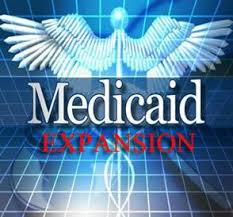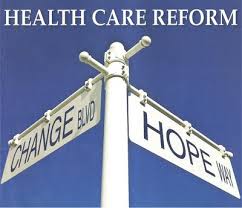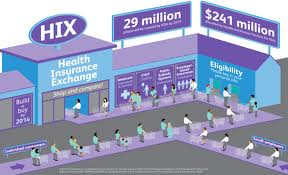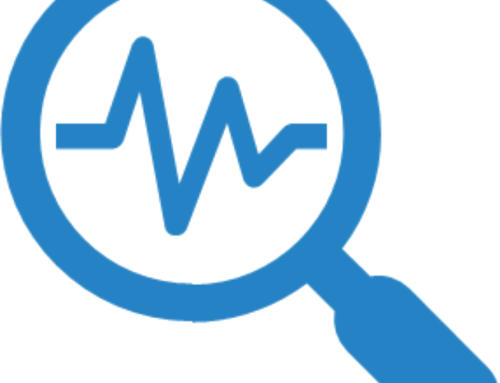Summary: How will Medicaid work with the new exchange? What changes have occurred as a result of the ACA?Leanr the importance of Medicaid the ACA and the Exchanges
What is Medicaid?

Do you know the importance of Medicaid the ACA and the Exchanges?
Medicaid provides insurance coverage to lower American individuals and families as well as those with disabilities. Medicaid is regulated at the federal level but administered by the individual states. As such, the federal government establishes minimum thresholds by which states are required to abide while allowing individual states the choice as to whether or not to expand beyond these minimum thresholds. Beginning in 2014, the minimum eligibility threshold is set at 133% of the federal poverty level.
What is the CHIP program?
The Children’s Health Insurance Program (CHIP) provides health coverage to children in families with incomes too high to qualify for Medicaid, but who also can’t afford private coverage. CHIP provides federal matching funds to states to provide this coverage. The Affordable Care Act of 2010 extends the CHIP eligibility standards through 2019. The law extends CHIP funding until October 1, 2015, at which time the CHIP federal matching rate will be increased by 23 percentage points, bringing the average federal matching rate for CHIP to 93%. The Affordable Care Act also provided an additional $40 million in federal funding to continue efforts to promote enrollment in Medicaid and CHIP. Beginning in January 2014, all individuals under 65 years of age, who earn less than 133% of the federal poverty level (FPL) , including those with children enrolled in CHIP, will be eligible for Medicaid. Children currently covered by CHIP with family incomes between 100–133 percent FPL will transition to Medicaid, but states will retain their ability to claim the enhanced CHIP matching rate. The law provides for a 23 percentage point increase in the CHIP federal matching rate beginning in October 2015.
Eligibility for CHIP, Medicaid the ACA and the Exchanges

The following groups are eligible for Medicaid and each has its own set of requirements.
- Children – Most states have elected to provide Medicaid to children with family incomes above the minimum of 100% of the FPL, and all states have expanded coverage to children with higher incomes through the Children’s Health Insurance Program (CHIP). All children from birth to age 6 with family incomes up to 133% and children age 6-18 with family incomes up to 100% are eligible for Medicaid.
- Non-Disabled Adults – The Affordable Care Act creates a national minimum eligibility standard of 133% of the federal poverty level (FPL). Beginning in 2014, most adults under the age of 65 (even those without dependent children) with incomes levels below 133% of the FPL will be eligible for Medicaid. This change ends the longstanding coverage gap for low-income adults.
- Pregnant Women – Medicaid coverage for pregnant women includes prenatal care through the pregnancy, labor, and delivery, and for 60 days postpartum as well as other pregnancy-related care. States have the option to extend Medicaid coverage to pregnant women up to or over 185% and most states have done so.
- Individuals with Disabilities – Many individuals who qualify for Medicaid based on disability also receive cash assistance under the Supplemental Security Income (SSI) program. In almost all states, SSI eligibility automatically qualifies an individual for Medicaid coverage.
- Dual Eligibles – Medicare enrollees who have lower income levels may get help paying for their premiums and out-of-pocket medical expenses from Medicaid. These individuals are deemed dual eligible. For those who have both Medicaid and Medicare, Medicaid can cover additional services beyond those provided under Medicare, such as: nursing facility care beyond the 100-day limit or skilled nursing facility care that Medicare covers, prescription drugs, eyeglasses, and hearing aids. Medicare is considered primary while Medicaid is considered secondary. After Medicare, Medicaid can pay up to the individual state’s payment limits. The Affordable Care Act creates a new office within the Centers for Medicare & Medicaid Services, the Medicare-Medicaid Coordination Office, to coordinate care for individuals who are eligible for both Medicaid and Medicare (“dual eligibles” or Medicare-Medicaid enrollees). The office is charged with coordinating care between the two programs to improve patient care and lower costs, while improving quality and accessibility, simplifying processes, and eliminating regulatory issues between the two programs.
Benefits of Medicaid the ACA and the Exchanges

The Affordable Care Act makes various changes to the benefits provided to Medicaid enrollees. While the administration of Medicaid is left to the individual states, the federal government does set forth minimum essential benefits as provided in the Affordable Insurance Exchanges. Mandatory Minimum Essential Benefits States establish and administer their own Medicaid programs and determine the type, amount, duration, and scope of services within broad federal guidelines. States are required to cover certain “mandatory benefits,” and can choose to provide other “optional benefits” through the Medicaid program. Minimum benefits include:
- Inpatient hospital services
- Outpatient hospital services
- EPSDT: Early and Periodic Screening, Diagnostic, and Treatment Services
- Nursing Facility Services
- Home health services
- Physician services
- Rural health clinic services
- Federally qualified health center services
- Laboratory and X-ray services
- Family planning services
- Nurse Midwife services
- Certified Pediatric and Family Nurse Practitioner services
- Freestanding Birth Center services (when licensed or otherwise recognized by the state)
- Transportation to medical care
- Tobacco cessation counseling for pregnant women
- Tobacco Cessation
Funding

Coverage for the newly eligible adults will be funded at 100% by the federal government for three years, beginning in 2014, phasing down to 90% by 2020. Additional federal funding for state Medicaid programs is also available for primary care, preventive care, community based long-term services and supports, and new demonstrations to improve quality and re-engineer delivery systems.
Coordination with the Medicaid, The ACA, and the Exchanges/Marketplaces

Medicaid the ACA and the Exchanges
Unlike Medicare, Medicaid and the CHIP Program are part of the Affordable Insurance Exchanges. The exchanges or marketplaces are one stop electronic based shops which provide information, options available by state (or the federal exchanges if states elected not to setup state run exchanges), and the opportunity to apply for coverage. Additionally, subsidies have been setup to assist lower income individuals and families who qualify. Federal funding is provided through a variety of venues to help states improve their eligibility and enrollment systems.
Other programs affiliated with Medicaid and the ACA
In addition to those mentioned above, the following are a result of the ACA and specifically related to Medicaid:
- Community-Based Long-Term Services & Supports
- Quality of Care & Delivery Systems
- Prevention of Chronic Disease
- Provider Payments
- Program Transparency
- Program Integrity
To learn more about Medicaid and the coordination between the Affordable Care Act, Medicare, and the health insurance marketplaces, please visit www.medicaid.gov. If you are transitioning to a Managed Care Organization (MCO) and need assistance, please contact BHM Healthcare Solutions, www.bhmpc.com, 1-888-831-1171 or results@bhmpc.com. BHM is a healthcare management consulting firm and has successfully helped many organizations transition to MCOs. Would you like to be next? Contact us for a free consultation today! .





RT @BHMHealthcare: What You Need to Know About Medicaid, the ACA, and the Exchanges: Summary: How will Medicaid work with the new… http:/…